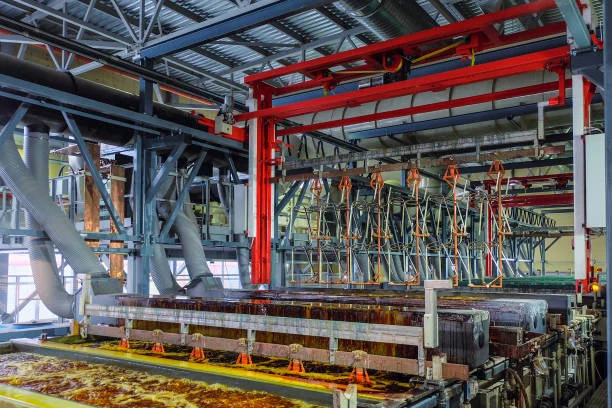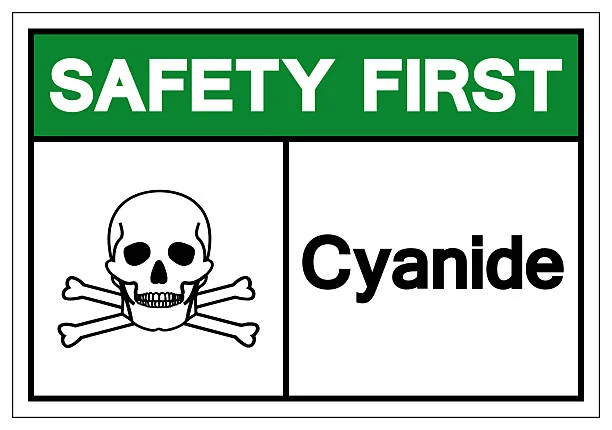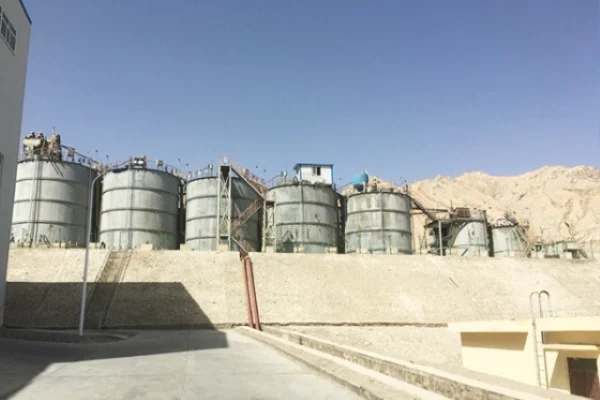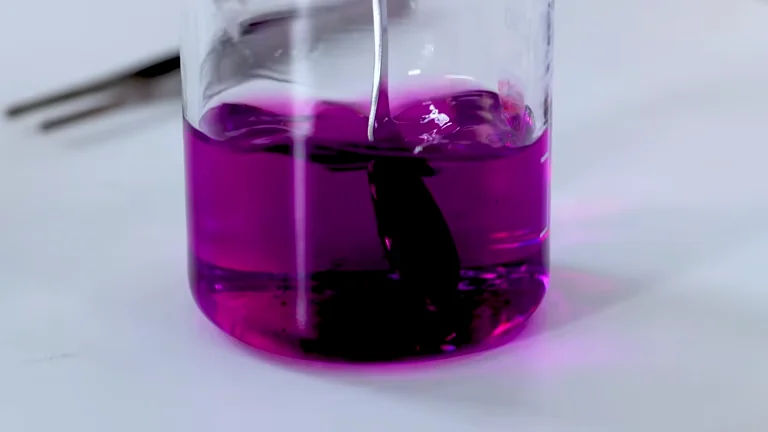
Introduction
In the electroplating industry, cyanides are widely used as important electroplating additives. They can significantly improve the quality and efficiency of electroplating layers. However, during the electroplating process, cyanide-containing exhaust gas is generated, which contains highly toxic substances such as hydrogen cyanide (HCN). This poses a serious threat to the environment and human health. Therefore, effective treatment of electroplating cyanide exhaust gas is of great significance.
Sources of Electroplating Cyanide Exhaust Gas
Electroplating Tanks: During electroplating, due to the volatilization of the electrolyte and the gas generated by the electrolytic reaction, cyanide-containing exhaust gas is released. For example, in the cyanide electroplating of gold and silver, the cyanide compounds in the plating solution will volatilize under the action of heat and electric current.
Cleaning Processes: After electroplating, when the workpieces are cleaned with cleaning solutions containing Cyanides, a small amount of cyanides will volatilize. Even if the concentration of cyanides in the cleaning solution is low, long-term accumulation and volatilization can still cause pollution problems.
Wastewater Treatment: If the electroplating wastewater treatment is improper, cyanide gas may escape. In the process of treating cyanide-containing wastewater, if the reaction conditions are not well controlled, the decomposition of cyanides may produce HCN gas and enter the atmosphere.
Auxiliary Equipment: Equipment such as ventilation systems and heating devices may also generate trace amounts of exhaust gas during operation. Although the amount is small, considering the high toxicity of cyanides, it cannot be ignored.
Characteristics of Electroplating Cyanide Exhaust Gas
High Toxicity: Cyanide compounds, especially HCN, are extremely toxic. Even in very low concentrations, they can cause harm to the human body. Inhalation of cyanide-containing exhaust gas can lead to symptoms such as headache, dizziness, shortness of breath, and in severe cases, it can be life-threatening.
Low Concentration but Cumulative Effect: Generally, the concentration of electroplating cyanide exhaust gas is relatively low, but due to continuous generation during the electroplating process, if not effectively treated, the cumulative effect will cause long-term pollution to the environment.
Treatment Process of Electroplating Cyanide Exhaust Gas
Exhaust Gas Collection
Install gas collection hoods or other collection devices at the exhaust gas generation points. These collection devices should be designed according to the specific production process and layout to ensure that the exhaust gas can be effectively collected. For example, in a large electroplating workshop, a combination of local collection hoods and overall ventilation systems can be used to comprehensively capture cyanide-containing exhaust gas.
Pretreatment
Dust Removal: Use dust removal equipment such as bag filters or electrostatic precipitators to remove particulate matter in the exhaust gas. Particulate matter may carry cyanide compounds on its surface, and removing them in advance can improve the efficiency of subsequent treatment and prevent damage to treatment equipment.
Dewaxing and Humidity Removal: Since the exhaust gas may contain water vapor and oil mist, use demisting devices and dehumidifiers to remove these substances. Water vapor can affect the reaction efficiency of subsequent treatment processes, and oil mist may also have an impact on the performance of catalysts and absorbents.
Main Treatment Process
Chemical Absorption Method
Principle: Use alkaline solutions such as sodium hydroxide (NaOH) or calcium hydroxide (Ca(OH)₂) as absorbents. Cyanide in the exhaust gas reacts with the alkaline solution to form cyanide salts. For example, HCN reacts with NaOH to form Sodium Cyanide (NaCN), which can effectively remove cyanide from the exhaust gas.
Process: The exhaust gas enters the chemical absorption tower, where it contacts the sprayed alkaline solution in a countercurrent manner. The absorption tower is usually filled with packing materials to increase the contact area between the gas and the liquid, improving the absorption efficiency.
Catalytic Oxidation Method
Principle: Under the action of a catalyst, cyanide in the exhaust gas is oxidized to non-toxic carbon dioxide (CO₂), water (H₂O), and nitrogen (N₂). Common catalysts include precious metal catalysts (such as platinum, palladium) and metal oxide catalysts (such as titanium dioxide, vanadium pentoxide).
Process: After passing through the chemical absorption tower, the exhaust gas enters the catalytic oxidation device. The device is equipped with a catalyst bed, and the exhaust gas passes through the catalyst bed at a certain temperature and space velocity. The catalyst promotes the oxidation reaction of cyanide, reducing its toxicity.
Wet Absorption Method
Principle: Use a wet absorption tower to spray a liquid absorbent to absorb cyanide in the exhaust gas. The absorbent can be a special chemical solution formulated according to the characteristics of cyanide.
Process: The exhaust gas enters the wet absorption tower from the bottom, and the absorbent is sprayed from the top. The two are in contact in the tower, and the cyanide in the exhaust gas is absorbed by the absorbent. The absorbed liquid is then treated separately to remove the cyanide.
Biological Treatment Method
Principle: Some microorganisms have the ability to decompose cyanide. Use these microorganisms to degrade cyanide in the exhaust gas in a suitable environment.
Process: The exhaust gas is first humidified and then enters the biological treatment device. The device contains a biofilm carrier on which microorganisms are attached. Cyanide in the exhaust gas is adsorbed by the biofilm and decomposed by microorganisms into non-toxic substances. However, this method requires strict control of environmental conditions such as temperature, pH, and nutrient supply to ensure the normal growth and activity of microorganisms.
Monitoring and Discharge
Install online monitoring equipment at the exhaust gas discharge port to continuously monitor the concentration of cyanide and other pollutants in the exhaust gas. Only when the exhaust gas meets the national and local emission standards can it be discharged into the atmosphere. The monitoring data should be recorded and regularly reported to ensure environmental compliance.
Case Study
A certain electroplating enterprise had serious problems with cyanide-containing exhaust gas pollution during the production process. To solve this problem, the enterprise adopted the following treatment measures:
Exhaust Gas Collection: Installed a high-efficiency gas collection hood above the electroplating tank to ensure that more than 95% of the exhaust gas was collected.
Pretreatment: Set up a dust removal and dehumidification system to effectively remove particulate matter and water vapor in the exhaust gas.
Main Treatment: Adopted a combination of chemical absorption and catalytic oxidation processes. First, the exhaust gas entered the chemical absorption tower filled with NaOH solution to remove most of the cyanide. Then, the remaining cyanide was further oxidized and decomposed in the catalytic oxidation device.
Monitoring: Installed an online monitoring system to ensure that the treated exhaust gas met the national emission standards.
After the implementation of these measures, the cyanide concentration in the exhaust gas of the enterprise decreased significantly, effectively reducing environmental pollution and protecting the health of employees.
Conclusion
Treatment of electroplating cyanide exhaust gas is an important measure to protect the environment and human health in the electroplating industry. By adopting appropriate exhaust gas collection, pretreatment, main treatment, and monitoring and discharge measures, the concentration of cyanide in the exhaust gas can be effectively reduced to meet the requirements of environmental protection. In the future, with the continuous improvement of environmental protection requirements, electroplating enterprises need to continuously optimize and innovate exhaust gas treatment processes to achieve sustainable development.
- Random Content
- Hot content
- Hot review content
- Lead Chloride/ Lead (II) Chloride 98%
- Flexible Customer and Supplier Relations Specialist (Location: Nigeria)
- Collector BLK-301/Composite Flotating Active Matter ≥60%
- Sodium Sulfide Industry Grade 60% 30ppm/150ppm Yellow/ Red Flakes Na2s
- Pharmaceutical Grade Zinc Acetate
- Caprylic/capric triglyceride
- Food Additive E330 Citric acid monohydrate
- 1Discounted Sodium Cyanide (CAS: 143-33-9) for Mining - High Quality & Competitive Pricing
- 2China's New Regulations on Sodium Cyanide Exports and Guidance for International Buyers
- 3Sodium Cyanide 98% CAS 143-33-9 gold dressing agent Essential for Mining and Chemical Industries
- 4International Cyanide(Sodium cyanide) Management Code - Gold Mine Acceptance Standards
- 5China factory Sulfuric Acid 98%
- 6Anhydrous Oxalic acid 99.6% Industrial Grade
- 7Oxalic acid for mining 99.6%
- 1Sodium Cyanide 98% CAS 143-33-9 gold dressing agent Essential for Mining and Chemical Industries
- 2High Quality 99% Purity of Cyanuric chloride ISO 9001:2005 REACH Verified Producer
- 3Zinc chloride ZnCl2 for High Molecular Weight Polymers Initiator
- 4High Purity · Stable Performance · Higher Recovery — sodium cyanide for modern gold leaching
- 5High Quality Sodium Ferrocyanide / Sodium Hexacyanoferr
- 6Gold Ore Dressing Agent Safe Gold Extracting Agent Replace Sodium Cyanide
- 7Sodium Cyanide 98%+ CAS 143-33-9











Online message consultation
Add comment: